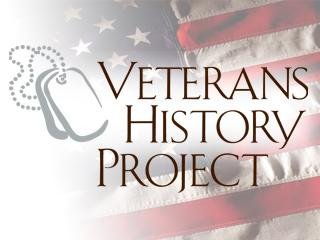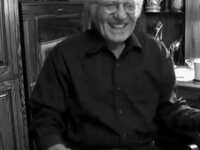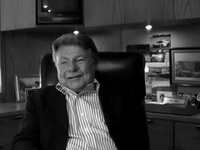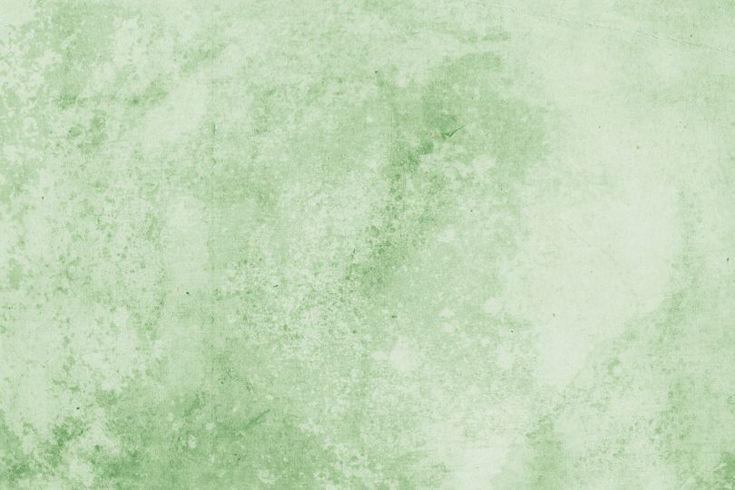Cold War
Explore the Oral Histories from Ypsilanti and Washtenaw County area Veterans who served in the Cold War
-

Zimmerman, Leon
Leon Zimmerman was born in Hersey, Michigan on June 4, 1924 in a town of 206 people. Leon was attending Grand Rapids University when the Japanese bombed Pearl Harbor. He enlisted in the Army rather than being drafted and having no choice of assignment. After numerous tests, Leon was finally assigned to Bombardier training. His first six weeks were spent marching, and doing calisthenics. Eventually Leon was transferred to Las Vegas for gunnery school, followed by Advanced Bombardier School in New Mexico. Leon graduated in 2/4/44 and was sent to England by way of Baltimore and Florida, where he was assigned to a replacement crew in the 8th Air Force. Eventually, his crew was assigned to the 457th Bomb Group. His crew participated in a number of training flights before they went on a mission. Their first mission was uneventful, a "Milk Run," that experienced no flak, no losses, no battle damage. There were many other missions by his crew. Two missions especially stood out for Leon. The first was over Stettin where they took a great deal of flak and were very close to ditching the plane. They did return to England safely however. The other was in Northern Germany. His B17 crew had to bail out because of the extensive damage. After a harrowing jump, he was captured by the Home Guard. His treatment was poor until the regular army took over. Leon and his crew were assigned to a camp that was commanded by a former Luftwaffe General who treated prisoners with respect. It was not a pleasant time but certainly it was not overly difficult. Leon's camp was liberated by the Russians. After spending time in different camps and some time in Paris, he returned home, by troop ship. He met and married his wife after his discharge. They are now in retirement in Jackson, Michigan. -

Wagner, Richard and Adele
Richard Wegner was born on December 13, 1924 in Blissfield, Michigan. He attended Blissfield High School and enlisted in the Army at the end of his senior year after taking a class in aircraft identification. He left home for Fort Custer near Kalamazoo on July 9, 1943. After passing the necessary tests to join the Air Corps, he was sent down south to Miami Beach for ten weeks basic training. In October of 1943, Richard attended the Air Force College Training Department at Michigan State University. In April of 1944, he was sent to San Antonio, Texas and was trained as a bombardier-navigator for eight weeks. From there, he received flight training in San Angelo, Texas. Richard was assigned as a bombardier/assistant navigator/nose gunner in a B-24. After getting married while on commissioning leave, he was sent to Westover Field Airbase near Springfield, Massachusetts where he became acquainted with his crew and did large amounts of flying and bombing practice. After VE Day, Richard's crew was taken off shipping orders to Europe and was sent to Boise, Idaho. After rendezvousing at the Golding Gate Bridge in San Francisco, California, Richard's crew flew to New Guinea where they spent ten weeks. After they arrived at Clark Airbase in the Philippines, the atomic bomb was dropped on Hiroshima, and the second on Nagasaki. Richard remembers seeing the Japanese delegation in their white planes at le Shima on their way to the signing of the peace treaty in Tokyo Bay. -
Wagner, Richard Donald
Richard Wegner was born on December 13, 1924 in Blissfield, Michigan. He attended Blissfield High School and enlisted in the Army at the end of his senior year after taking a class in aircraft identification. He left home for Fort Custer near Kalamazoo on July 9, 1943. After passing the necessary tests to join the Air Corps, he was sent down south to Miami Beach for ten weeks basic training. In October of 1943, Richard attended the Air Force College Training Department at Michigan State University. In April of 1944, he was sent to San Antonio, Texas and was trained as a bombardier-navigator for eight weeks. From there, he received flight training in San Angelo, Texas. Richard was assigned as a bombardier/assistant navigator/nose gunner in a B-24. After getting married while on commissioning leave, he was sent to Westover Field Airbase near Springfield, Massachusetts where he became acquainted with his crew and did large amounts of flying and bombing practice. After VE Day, Richard's crew was taken off shipping orders to Europe and was sent to Boise, Idaho. After rendezvousing at the Golding Gate Bridge in San Francisco, California, Richard's crew flew to New Guinea where they spent ten weeks. After they arrived at Clark Airbase in the Philippines, the atomic bomb was dropped on Hiroshima, and the second on Nagasaki. Richard remembers seeing the Japanese delegation in their white planes at le Shima on their way to the signing of the peace treaty in Tokyo Bay. -
Valenstein, Elliot S.
Elliot Valenstein enlisted in the Army at the age of 18 following the Pearl Harbor attack. After training he was shipped to the South Pacific. They traveled without escort and landed in Australia. Before the Coral Sea victory, the Japanese were unstoppable. His unit was then sent on to Bombay, India and crossed to Calcutta by train. Elliot received quick training in how to string lines. There was fear the Japanese who were threatening India would link up with the Africa Corp from the East. In Burma, his unit met up with Head Hunters. Elliot's unit worked under a great deal of hardship including swollen rivers and threats of Chinese bandits. When World War II ended, Elliot was in Calcutta. He was shipped back to Seattle and on to Fort Dix. After discharge he spent time in a VA hospital with malaria. Eventually Elliot enrolled in college and began his research project that eventually attracted him to the University of Michigan. Much of his research was supported by NASA. After retiring Elliot continued to live in Ann Arbor and became Professor Emeritus. -

Turner, Amherst Hale
Amherst Turner was born and raised in Ann Arbor, Michigan. He earned his English degree and teaching certification from the University of Michigan while also participating in the Reserve Officer Training Corps (ROTC.) In 1961, after graduating from U of M, Amherst attended basic training in Fort Benning, Georgia and was trained as an officer. After his basic training, Amherst was shipped out to Korea and joined a unit guarding the demilitarized zone between North and South Korea. Amherst did this for for 13 months and became a 2nd Lieutenant in that time. Amherst returned to Fort Benning, was promoted to Captain and eventually was transferred to a base in Florida that was to serve as the staging area for a proposed invasion of Cuba. On this base, he served as a property book officer. In 1963, Amherst left the service, still involved in the reserves, and went into manufacturing. He was married in 1969 and had two children. -
Tracy, William B.
Like many young men of his generation, Bud Tracy served in the Armed Forces during World War II. Eager to see the world, he chose the Navy because he could enlist at seventeen and his uncle could help him through the process. He left high school before his graduation date, but made up the credits by enlisting. Mr. Tracy's wartime service was spent in the South Pacific including the Admiralty Islands. Tracy loved being in the service despite facing the same fears and frustrations that other young men encountered. For example, his first night on guard duty turned out to be one of his scariest moments in the Navy. Tracy mistook an anthill for a Japanese helmet and was told by his superiors to fire. Tracy did not want to alert other possible Japanese soldiers in the area of his location. As a result, he sat and stared at it, imagining the "helmet" coming closer and closer as the hours passed. His battle experiences were full of danger and adventure as well. Mr. Tracy was asked to go into the water and sink shell casings, swim up a river at night to scout the Japanese positions, and save his fellow sailors who were in trouble in the water. While completing his duties, Tracy was wounded on coral and was sent to Australia as a casualty to heal his legs which developed jungle rot. There were many enjoyable moments throughout Tracy’s time overseas. He and his buddies enjoyed pulling pranks on other men in their unit. In one instance, Tracy and his buddies rigged up a fake spider in the tent of one of their friends and surprised him with it when he returned from guard duty. USA Tours passed through the South Pacific while Bud was there and he was able to see Bob Hope and other performers in the tours. He particularly remembered a time when Bob Hope visited and ate a meal in the chow hall with the enlisted men instead of going to the officers' hall as was scheduled. Just as they are to American troops serving overseas today, care packages from home were highly valued during World War II. Mr. Tracy told an interesting story off-camera about a care package that he received from home. A couple of months after Christmas, he received his Christmas present from his family back home. When he got the box, the other men all crowded around because there is an unspoken rule that all packages are shared with the unit. The box was opened to reveal several cans of Spam that his mother had saved up her ration coupons to get for him. However, the sailors were regularly fed Spam for meals and were sick of it by that point. Tracy stated that once the box was opened and everyone saw that it was Spam, they left it for him, and never ever ate a single can of it. When Tracy returned home after his military service was over, he utilized the G.I. Bill to enroll in college. He had a successful career working for the phone company and raised a family. Despite this, like many of the men that he served with, Tracy still feels guilt over an incident that resulted in the deaths of fellow sailors, even though he did all that he could to save them. In many cases, those not involved in the situation can look at it and see that there is no reason for the person affected to blame himself, yet in his mind, he still does. Tracy was very humble in his accounts of his experiences during World War II, yet even in the short time it took to conduct the interview, there were examples of his bravery and heroism. Like so many veterans, he did not give the impression that what he had done was very remarkable in the grand scheme of things, yet it was. He risked his life to save others more than once in the memories that are captured in the interview and that can only be a tiny fraction of. what his war experience was really like. -
Swisher, Reuben Voss
Reuben Swisher had nine years, two months and eighteen days on active duty, followed by five years in the Reserves. He was wounded twice in Korea and earned the Purple Heart and Bronze Star for valor while a combat infantryman. Swisher was seventeen years old when he served in Korea and was assigned to Fox Company of the 2nd Battalion, 7th Regiment, 1st Cavalry Division. He was wounded on Hill 578 on February 15, 1951 at Chipyong-ni, near Yangpyoeng as part of a force defending the Wonju Line during "Operation Killer." Besides being wounded twice, he suffered frostbitten feet. After his Army service in 1950-1952 and rise to Corporal, he joined the Air Force in 1957 and served until 1964, achieving the rank of Technical Sergeant. Besides the Purple Heart and Bronze Star, he earned the Combat Infantryman Badge, the Korean Service Medal with three Bronze Stars, and the United Nations Service Medal. Swisher then served the Department of Veterans Affairs and earned several honors while employed there, followed by 400 hours of volunteer work at the VA Medical Center in Ann Arbor after his retirement in 1991. He also served as Commander of the Washtenaw County Chapter of Disabled American Veterans for seven consecutive terms. -
Strouss, John Philip
John Strouss was born in Freeport, Illinois on March 4, 1918. His family moved to Jackson, Michigan during the influenza epidemic while he was very young. John attended the University of Michigan from 1937 to 1942. While sleeping in on a Sunday morning, he and his roommate heard over the radio the news of the attack on Pearl Harbor. Eighteen of his friends went in for physicals, yet only three passed. John's eyes kept him out of the line officers. After several physicals, he was commissioned in the Navy in the spring of 1942. He became a staff officer in the supply corps - those responsible for the food and clothing in the Navy. John was called up in January 1943 and sent to South Austin Naval Yard for basic training (note: transcriber could not verify the location of said naval yard). He was then sent to Harvard University until the summer for supply officer education. He was assigned to Acorn 16 and sent to Port Hueneme, California to wait for the rest of the officers. In September, Acorn 16 was officially commissioned into the Navy and was granted base personnel for airbases in the Pacific. The unit shipped out to Barber's Point in Oahu, Hawaii. From there, they were ordered to Apamama in the Gilbert Islands along with a Marine Corps unit and a CP unit. An airbase was constructed at Apamama in which John worked. John remembers very friendly Natives and nice weather in Apamama. One incident stuck with John. A Japanese submarine was reported in the area. Despite the harsh weather, a scout plane was still sent out. the plane never returned. John was ordered to gather and send the missing man's belongings to his family. After a little over a year, the airbase Apamama was shut down and John was transferred to Guam. He recalls mud and relentless rain in Guam. He was put in charge of the mess hall. Most of the food was canned, yet at one point they were sent fresh ground beef. Hamburgers were prepared for the men, which gave many a feeling of homesickness. After the war, the Navy put together a class for those interested in aiding in terminating Navy contracts. John volunteered due to his business school training. He was sent to Harvard for the class. From there, he was sent to an office in Cincinnati, Ohio to clear plants for civilian production. Later on, he was transferred to the Naval Reserve and left as a Lieutenant Commander. -
Stokes, Philip Whitney
Philip Stokes was born in Cleveland, Ohio and moved to Ypsilanti, Michigan when he was eleven years old. He graduated from Ypsilanti High School in June of 1943 and enlisted in the Marines in November of 1943. After boot and basic training, Philip was assigned to the newly formed Marine 5th Division, the Division landed on Iwo Jima in February 19 of 1944. They were responsible for cutting the Japanese forces in two. Philip was assigned to the Battalion Headquarters as a clerk. Casualties were heavy, two of every three Marines were killed or wounded. The Marines received a big morale boost when on the 27th of March a damaged B29 landed on Iwo Jima even though the island was not fully secured. That had been part of their mission to provide a landing area close to Japan. Philip's Division returned to Hawaii and began preparing for the invasion of Japan. Philip was sent to Washington D.C. where he was responsible for reviewing requests for hardship discharges. Philip was discharged in April of 1946 and was married in September of 1946. He attended Cleary College and received an Associate Degree, which eventually helped to secure a position at a local bank, from which he retired. Philip has four children, six grandchildren and three great grandchildren. He continues to live in Ypsilanti, Michigan. -
Staton, Gerald
Gerald Staton tried to enlist after Pearl Harbor but he was denied because he was not yet 17. He joined the Marines when he became 17. Gerald did his basic training in San Diego and had additional training in San Luis Obispo. He was sent to Mare Island just north of San Francisco and from there was sent to Woodlark Island which is a part of the Solomon Islands. The landing at Woodlark was considered Gerald’s worst experience ever. Gerald was assigned to a Caterpillar D-8 Dozer to clear away the thick vegetation for roads and airfields. Japanese planes would attack the island after dark. On one particular night, a Japanese fighter strafed an area near Gerald. He jumped in the river and was bitten by a rat. He was hospitalized for several days with typhus and a high fever. After his hospital stay, Gerald was sent to the US to train as a tank commander. He was shipped to Saipan where he witnessed the B-29 taking off to bomb Japan, using the atomic bomb. After the surrender, Gerald was sent to Nagasaki as a scout for the 2nd Division. He stayed there for 60 days, which ultimately affected his health due to exposure to radiation. After discharge he went to Miami University in Ohio and spent the rest of his life as an insurance salesman. Once a year Gerald and his wife attend a reunion of the Marine Battalion in which he served. -
Spann, Roscoe Tyson
Roscoe (he goes by Tyson) grew up in Mounds, Illinois. He received numerous letters asking that he report for duty. Instead, he went to Detroit to live with relatives. He graduated from Lane College in Tennessee and was slated for a career in Medicine. The Federal Agents caught up with him in Detroit. Tyson was sent to Officers Training School (90-day wonders), and was assigned to train Black soldiers for combat. "Becoming an Officer was quite a distinction and honor" despite the resentment he received from many of the White officers. Tyson was discharged after seven years of service. It amazed him that after spending so much time and energy in trying to stay out of the Army, he worked very hard to accomplish the goals established for him while in the Army. He describes his experience as an honor and he is very grateful. After discharge, Tyson went to Chicago with his wife. He drove a bus for ten years. Eventually, Tyson settled in Ypsilanti. He joined his brother in the construction business. At the time a Black contracting business could not borrow money from Ann Arbor banks so they went into remodeling. Eventually Tyson joined Ford Motor Company as a Testing Technician, retiring in 1987. Tyson often describes "Two Armies - One White and One Black." He does not show any resentment realizing that was the way the country was at that time. -
Snider, Charles Robert
Charles Snider enlisted in the Army in March of 1943 while attending the University of Michigan. He took his basic training in Ann Arbor. Because of his interest in foreign languages, after basic training, he began training in a meteorological program sponsored by the Army. Because of his meteorological training and his knowledge of Russian, he was given orders in the middle of the night to report to Great Falls, Montana. After being interviewed by a Russian speaking American officer, he was one of two people selected for a special program. Mr. Snider was given orders to report to Ladd Air Force Base in Alaska where he began conducting meteorological forecasts for the Lend-Lease Program that was sending planes to Russia from the United States. He commented on how he worked with Russian officers daily. He also noticed the Russians had political officers in Alaska to "monitor" the interaction between the Americans and the Russians. Snider noted in his journal that the Russians became very cold toward the Americans after the U.S. dropped the atomic bombs on Japan. Mr. Snider commented on how the best service pilots he ever saw during the Lend-Lease Program were female WASP's or Women's Army Service Pilots.

